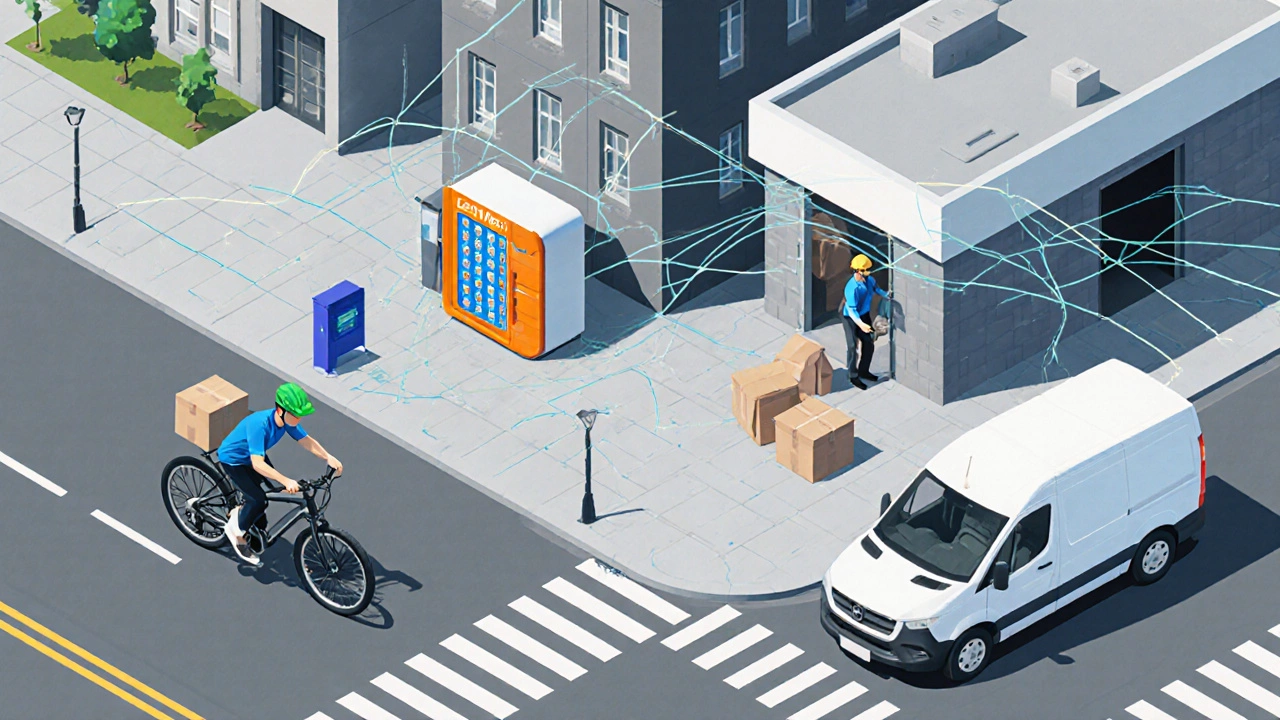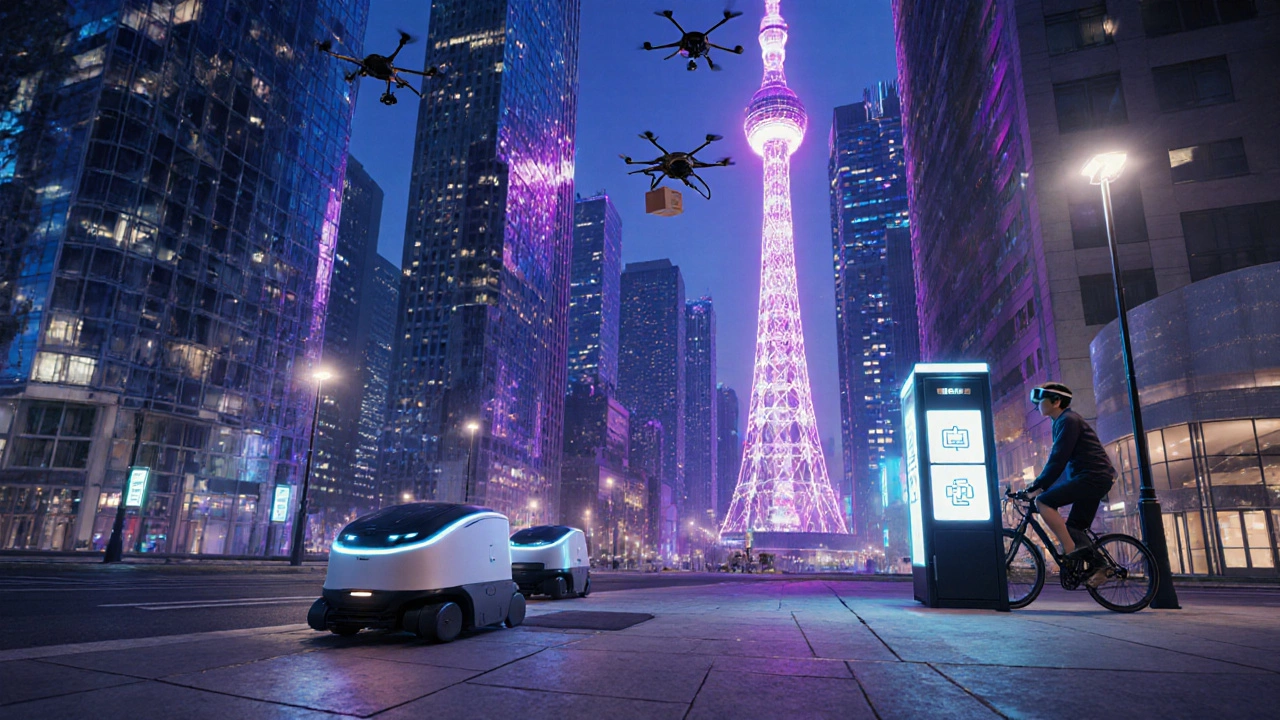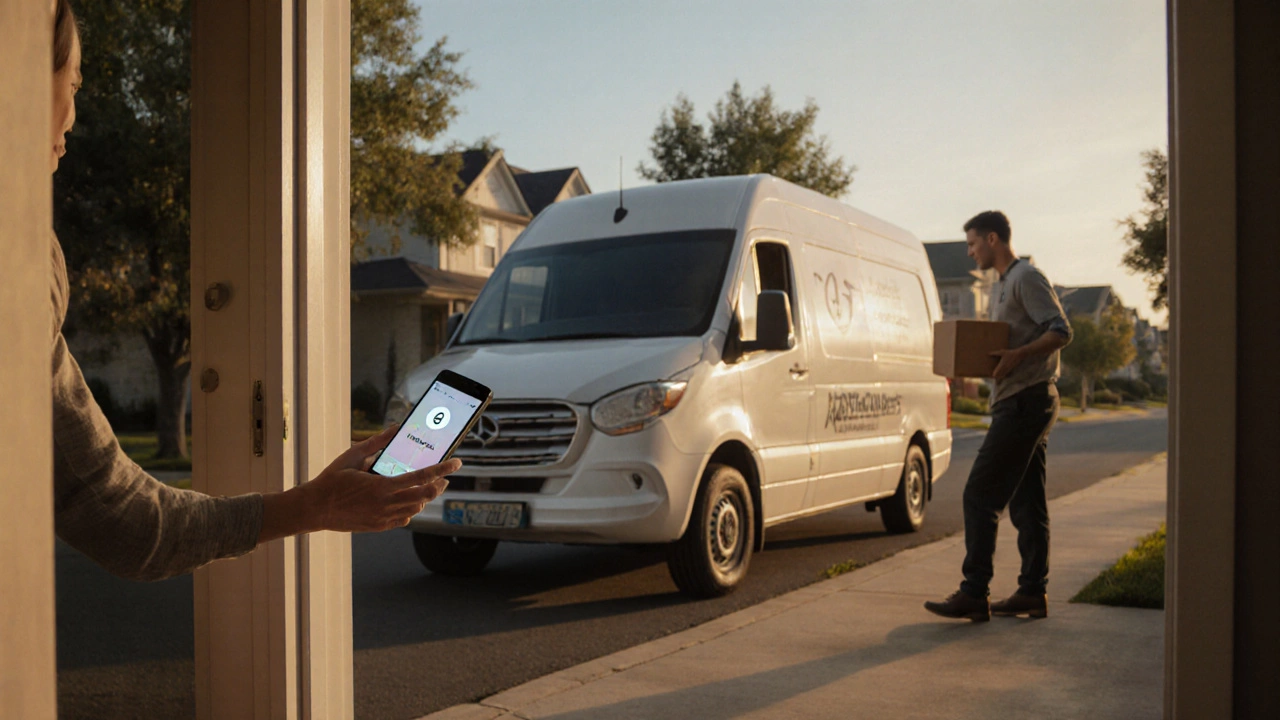Last Mile Delivery Cost Calculator
Estimate Your Delivery Costs
When you click "track my order" and see a van pulling up to your door, you’re witnessing the final stretch of a complex supply chain. That final stretch is called last mile delivery - the part that moves a package from a local hub straight to the customer’s hands.
Last mile delivery is the last leg of the shipping process, typically covering the distance between a distribution center or local depot and the end consumer. It often represents the most expensive and time‑sensitive segment of the logistics chain, accounting for up to 50% of total delivery costs.
Why the "last mile" Costs so much
Unlike bulk freight that moves pallets over highways, the last mile deals with single parcels, scattered drop‑offs, and a wide range of delivery windows. The key cost drivers are:
- Low density - each driver may only carry a few packages per route.
- Urban congestion - traffic jams, parking restrictions, and narrow streets slow everyone down.
- Customer expectations - same‑day or one‑hour windows demand more resources.
- Reverse logistics - handling returns adds extra stops.
Core players in the last‑mile ecosystem
Several entities work together to make that doorstep hand‑off happen. Below are the most common ones, each introduced with a brief definition.
Courier is a service provider that transports parcels from a local hub to the final address. Couriers can be large carriers like DHL or niche start‑ups focusing on city‑center deliveries.
Fulfilment centre is a warehouse located near major urban areas, stocked with ready‑to‑ship inventory. By positioning goods close to customers, fulfilment centres shrink the distance the last mile must cover.
Route optimisation is the use of software algorithms to chart the most efficient path for a driver, balancing distance, traffic, and delivery windows.
Gig‑economy driver is an independent contractor who picks up parcels and delivers them using their own vehicle, often coordinated through a mobile app.
Parcel locker is a self‑service kiosk where customers can retrieve packages at any time, reducing the need for door‑to‑door drops.
Delivery modes - a quick comparison
| Mode | Typical vehicle | Best for | Key limitation |
|---|---|---|---|
| Van delivery | Medium‑size van | Standard parcels, suburban routes | Higher fuel cost, limited city‑center access |
| Bike courier | Electric bike | Small packages, dense urban cores | Weight limit ~5kg, weather‑dependent |
| Drone delivery | Unmanned aerial vehicle | Urgent, lightweight items | Regulatory hurdles, range <10km |
| Parcel locker | Fixed kiosk | Any size, 24/7 pick‑up | Requires locker network expansion |

How technology is reshaping the final stretch
Advanced analytics, real‑time traffic feeds, and AI‑driven routing have cut average delivery times by 15‑20% in major U.S. and European cities. A few concrete examples:
- Dynamic routing apps recalculate a driver’s path on the fly, reacting to accidents or sudden congestion.
- Predictive demand models tell fulfilment centres which SKUs to stock locally, lowering the number of trips per package.
- Contactless hand‑off - QR codes or NFC tags let customers unlock a locker or verify receipt without a signature.
Challenges that still linger
Even with tech, several pain points remain:
- Last‑mile carbon footprint - emissions from dozens of small vehicles add up. Green fleets (electric vans, cargo bikes) are still a minority.
- Regulatory constraints - many cities limit heavy vans in historic centres, while drone corridors are still under review.
- Labour volatility - gig‑economy drivers may quit on short notice, creating capacity gaps during peak seasons.
- Customer availability - missed deliveries force rescheduling, raising costs and frustrating shoppers.

Best‑practice checklist for businesses entering last‑mile delivery
- Map your most‑frequent delivery zones and identify high‑density clusters.
- Partner with a local fulfilment centre or set up a micro‑hub within 30km of your biggest markets.
- Invest in route‑optimisation software that integrates live traffic data.
- Offer multiple delivery options - door‑step, bike‑courier, or locker - to match customer preferences.
- Track carbon emissions per kilometre and set a reduction target (e.g., 10% in 12months).
Future outlook - where is last‑mile delivery headed?
Analysts at the Logistics Institute project that by 2030, autonomous delivery robots will handle up to 25% of urban parcels under 2kg. Meanwhile, 5‑G networks will enable ultra‑low‑latency communication between drivers, lockers, and customers, making same‑hour delivery a norm rather than a premium service.
In the meantime, businesses that blend technology, local hubs, and flexible delivery modes will stay ahead of cost pressures and keep customers happy.
Frequently Asked Questions
What exactly is considered "last mile" in logistics?
The “last mile” refers to the final segment of a delivery route, moving a package from a local hub, depot, or fulfilment centre directly to the consumer’s address.
Why does the last mile make up such a large share of total delivery cost?
Because each driver handles low‑density, scattered stops, often in congested city streets, and must meet tight time windows. Those factors drive up fuel, labour, and vehicle wear costs.
Can technology really lower my last‑mile expenses?
Yes. Route‑optimisation software, AI demand forecasting, and real‑time traffic feeds can shave minutes off each route, translating into fuel savings and higher driver utilisation.
What delivery modes are most sustainable?
Electric cargo bikes and vans produce the lowest emissions per kilometre in dense urban areas. Parcel lockers also reduce the number of door‑to‑door trips.
How do parcel lockers improve the last‑mile experience?
Lockers let customers pick up orders at any time, eliminating missed‑delivery fees and reducing the number of stops a driver must make.


